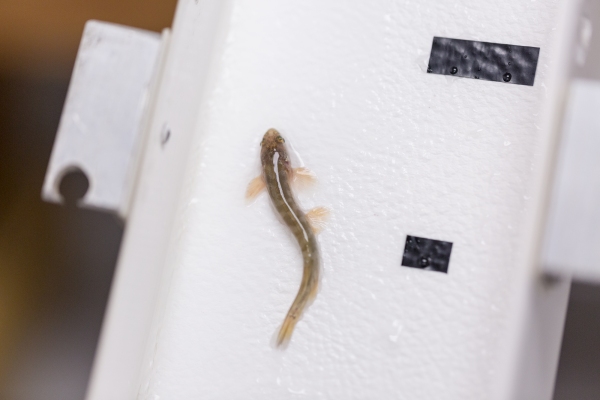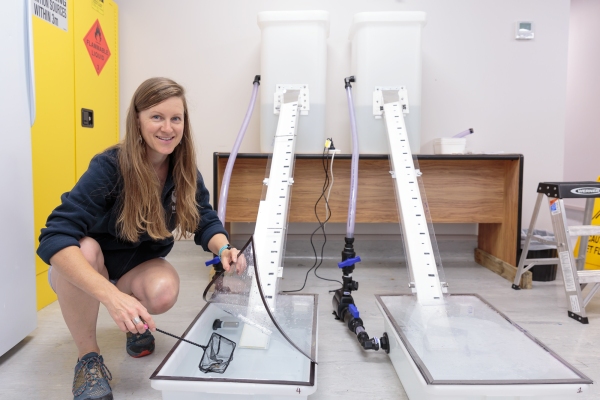New Zealand’s native fish are doing their best to climb up ramps in a NIWA laboratory so scientists can learn how to better help them navigate our tricky waterways.
Hamilton-based hydroecologist Dr Eleanor Gee and her team have rigged up six ramps – each at different angles and sporting one of two different surface types – one smooth, the other textured ‑ to test how adept the fish are at making their way to the top. The idea is to simulate their upstream migrations.
She’s using young fish of the whitebait species kōaro, “These species are known to be climbers and all migrate as part of their lifecycle. Kōaro are able to penetrate further inland than other whitebait species after spending their larval life in the sea.”
Migrating native fish face a range of issues in our waterways, including manmade barriers such as dams, weirs and culverts that prevent them reaching their preferred freshwater habitats.
“What we’re trying to do is find out the limits of the known climbing fish by testing them on ramps of varying steepness. Ultimately, we will look at whether larger or older fish find it more difficult. We know some small fish can climb near vertical slopes, but they probably can’t do that their entire lives, so we need to find out at what stage they stop.
“Our preliminary results suggest that both slope and substrate affect climbing success. Fish climb better on a rough surface and on gentle slopes than on smooth substrates or steep slopes, although the individual variability is typically larger than the effect of the surface or slope - some fish are just better climbers than others,” says Gee.
A few fish have successfully climbed a near-vertical ramp made of smooth plastic guttering. However, the overall success rate is low, however, with only around 50% of fish able to climb even the "easiest" ramps. Eleanor and her team are currently testing some larger fish to see if fish become stronger climbers as they grow.
Dr Gee says the ability to climb is not a particularly common strategy for freshwater fish, but it allows some migratory species to migrate further upstream than other species they compete with. More than one-third of New Zealand’s native freshwater fish migrate from the sea upstream, and that includes a number of species in decline.
“The shortjaw kōkopu is a nationally threatened species and is also a climber, so it’s important to find as much as possible about climbing so we can manage them in the best possible way.”
Not all climbing fish climb in the same way. Kōaro use an alternating limb movement, like swimming freestyle. “It’s pretty impressive watching them shuffle their way up these structures.”
The insights Dr Gee gains from the experiments will be used to update the New Zealand Fish Passage Guidelines, first introduced in 2018. The guidelines set out recommendations for designing infrastructure in streams that enable fish to pass through and were developed to help waterway managers, engineers, environmental officers, iwi and communities implement better fish passage.
New freshwater management rules require all regional councils to identify barriers to fish passage and come up with a plan for mitigating them.
“A lot of what drives me professionally is the contribution I can make to the public knowledge and understanding of these species. People care a lot about these treasured animals.”


